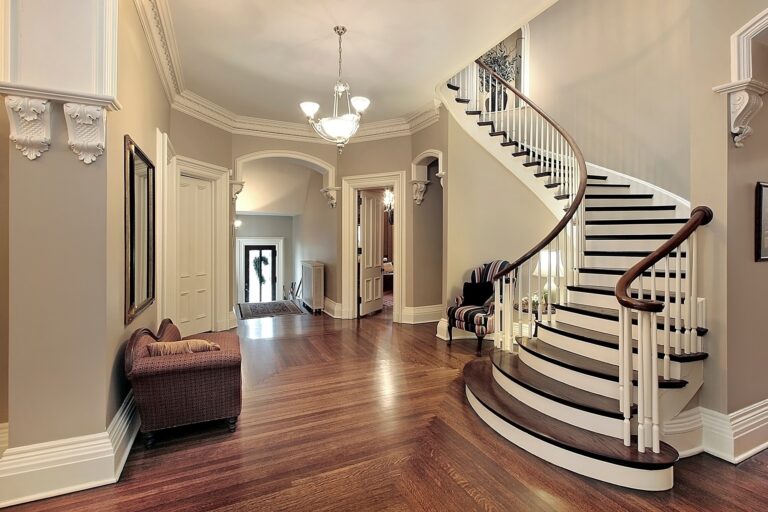More than finishes and fixtures, a well-designed kitchen needs to function seamlessly for its desired purpose. Proportions, circulation, and clearances can make all the difference between a space that flows and one that frustrates. So as an interior designer, understanding standard kitchen dimensions is essential.
This guide breaks down the key numbers you need to know: standard kitchen sizes, minimum requirements, layout-specific dimensions, cabinet sizing, counter heights, and the all-important island proportions.
Table of Contents
What are standard kitchen dimensions?
While every home has its differences, certain standards guide kitchen planning across the industry. These aren’t arbitrary—they’re based on appliance sizing and comfortable circulation.
- Single-wall kitchen: At least 8 feet long, including both counter and appliance space.
- Galley kitchen: 7.5-12 feet wide, with 3 feet of clearance between the two sides.
- Full kitchen with island: Requires 42”-48” of clearance on each side of the island, with full kitchen dimensions depending on the size of the island.
- Dishwasher to sink distance: A maximum of 36 inches is ideal for easy loading.
- Oven clearance: 48 inches minimum in front of the oven door..
- Refrigerator landing space: 15 inches of counter space on the handle side.
Every jurisdiction may hold slightly different requirements, but these guidelines are safe to use as a starting point. However, never assume a standard will work in every instance. Local building codes, client lifestyle, and appliance specifications can all shift kitchen dimensions, so it’s important to double-check for yourself.
Minimum kitchen size requirements
While compact kitchens can work, especially in apartments, condos, or older homes, these spaces still need to meet certain minimums to remain functional. Here are some factors to consider when deciding how small your kitchen layout can go:
- Required appliances: You’ll need to prioritize space for large appliances, including the sink, stove, and refrigerator. These are most functional when placed within 4-9 feet of each other (known as the kitchen work triangle).
- Walkway width: Include a kitchen walkway width of at least 36 inches to make cooking and cleaning comfortable.
Meeting these minimums keeps kitchens safe and usable. Fall below them, and clients may end up with tight clearances that restrict movement, appliances that can’t open fully, or awkward work zones that create daily frustration. For designers, understanding these minimums is key tocreating a compact but efficient kitchen even in the face of space constraints.
Kitchen layout dimensions
The overall kitchen shape—galley, L-shape, or U-shape—dictates how the space functions. Each of these layouts has its own set of ideal proportions.
Galley kitchen dimensions
Galley kitchens are made up of two parallel runs of cabinets, making them efficient in smaller homes and apartments. They work best when circulation is controlled (no heavy through-traffic).
- Recommended width: 7.5-12 feet
- Aisle clearance: 4 feet
- Counter runs: Full kitchen length
- Avoid: Aisles narrower than 36 inches or wider than 60 inches
In galley kitchens, it’s important to be mindful of balance. Too narrow and movement is restricted—imagine trying to pass through while the dishwasher is open. Too wide and efficiency suffers, as the cook has to walk long distances between prep, cooking, and cleanup zones.
L-shaped kitchen dimensions
The L-shaped kitchen is a flexible layout that works well in medium to large spaces. It adapts well to open-concept homes. With two adjoining runs of cabinetry, it supports an efficient triangle and leaves plenty of space for islands or dining areas.
- Leg length: 8-13 feet per leg
- Aisle clearance: A minimum of 3.5 feet
- Best for: Flexible layouts, open concepts, small islands
L-shaped kitchens benefit from thoughtful corner design. Dead corners can waste valuable storage unless fitted with solutions like lazy Susans or pull-out mechanisms.
U-shaped kitchen dimensions
The U-shaped kitchen is the most spacious and functional, with three sides of the room covered in cabinetry. It maximizes counter and storage space but requires careful planning to prevent congestion.
- Room width: 9-12 feet
- Center width: 5-8 feet
- Island possibility: Only in large U-shaped kitchens
- Clearance around island: 42-48 inches
Remember to design your corners carefully. Two corners mean twice the challenge for storage. Use specialized cabinetry to avoid wasted space. Appliance placement also needs balance. Keep the work triangle in mind, and avoid placing the refrigerator, oven, and dishwasher on the same wall.
Kitchen island dimensions
Kitchen islands have become the norm, but when they aren’t sized correctly, they turn from a functional feature to a daily frustration.
- Standard island size: No more than 10% of the kitchen’s square footage
- Clearance: 42–48 inches
- Seating overhang: 12 inches
- Space per seat: 22-24 inches
The island’s function dictates its dimensions. A prep island may be compact, while one designed for entertaining needs deeper counters with ample overhang for seating. You should also consider circulation through the kitchen. Does the island block the work triangle, or does it complement it?
Kitchen cabinet sizes
Cabinet sizes anchor the kitchen. While manufacturers offer some flexibility, industry standards keep the dimensions fairly aligned.
- Base cabinets: 24 inches deep, 34.5 inches high (without countertop), 12-48 inches wide
- Wall cabinets: 15-24 inches deep, 12-42 inches high, 12-36 inches wide
- Pantry cabinets: 84-96 inches high, 12-24 inches deep, 12-36 inches wide
Cabinet dimensions impact everything from appliance size to sight lines. Balance is key here as well. Oversized wall cabinets can feel overwhelming in small kitchens, while undersized base cabinets waste potential storage space.
Standard kitchen counter height
Counter height directly affects the comfort and usability of a kitchen. Here’s a look at the height of all kitchen surfaces:
- Standard height: 35-40 inches tall
- Bar height: 41-43 inches tall
- Table height: 30 inches
- Thickness variation: Countertop materials typically add 1-1.5 inches
While 36 inches is standard for counters, it isn’t universal. For clients with distinct heights, customized counter heights may improve cooking comfort. Multi-level counters can accommodate both food prep and seating. Accessibility needs can also affect counter height.
Tips for planning kitchen dimensions
Numbers alone don’t guarantee success. As an interior designer, you can bring value by interpreting the standards and adapting them to client needs (as long as adjustments are allowed under code).
- Prioritize workflow: Always remember the work triangle.
- Plan landing spaces: Near sinks, stovetops, and refrigerators.
- Account for appliance doors: Full swing clearances make cooking easier.
- Think about storage zones: Place frequently used items within easy reach.
- Design for real users: Think about who you’re working for. A family with three kids has different needs than a single homeowner.
- Communicate clearly: Share kitchen dimensions and design details in an interior design spec book to avoid client confusion. Use design software like DesignFiles to share details instantly.
Common mistakes to avoid
Even the most experienced interior designers can overlook dimensional details. Here are a few common mistakes to watch out for when designing kitchens:
- Ignoring appliance specs: Standard dimensions are a guideline, but appliances come in several sizes. For example, counter-depth refrigerators and custom ranges require additional clearance beyond the nominal footprint. Overlooking these specifications can prevent doors from opening fully, reduce landing space, or interfere with your cabinetry.
- Neglecting landing areas: Prep and cleanup are inefficient without dedicated landing zones next to sinks, cooktops, and refrigerators. This leads to constant frustration in the kitchen, even if the space looks perfect visually.
- Forgetting to future-proof: Kitchens need to evolve over time. Today’s compact appliances may be replaced with larger, taller, or wider models in a few years. Counter materials and cabinet colors may shift to meet new interior design trends. Clients may even want to add small appliances like a wine fridge or ice maker. And if you don’t account for these potential upgrades, you may accidentally create a kitchen that feels outdated before its time.
Frequently asked questions
Get answers to important FAQs.
Open-concept kitchens need extra thought when it comes to spacing and traffic flow. Islands, seating, and appliance placement must support the work triangle. They must allow for clear sightlines to living and dining areas. It’s also important to balance function with social interaction, ensuring multiple users can work comfortably at the same time.
Heavier materials like stone require strong base cabinets and may reduce flexibility in cabinet depth or overhangs. Thinner materials may allow creative overhangs or multi-level islands.
Proper lighting doesn’t change measurements, but it affects the perception of the space. Undercabinet lights, pendant fixtures, and task lighting can help a kitchen feel larger and more functional, especially in smaller homes.
Yes. L-shaped or rounded islands can work, but designers must carefully maintain clearances and ensure the work triangle isn’t disrupted.
Final thoughts
Mastering kitchen dimensions is about more than memorizing numbers. It’s about understanding how those numbers translate into real-world usability, safety, and comfort. The right clearances, proportions, and layouts transform a kitchen from simply attractive to truly livable. By balancing guidelines with context and client needs, you can create kitchens that work as beautifully as they look.
Are you an interior designer who wants to build their business on the right foundation? Learn more about DesignFiles.


![15 Interior Design Rules for Every Space [With Examples!]](https://blog.designfiles.co/wp-content/uploads/2025/09/interior-design-rules-768x512.jpeg)